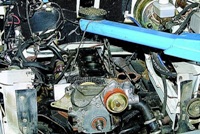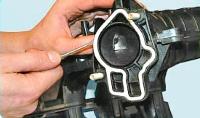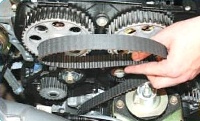The crankshaft position (timing) sensor type (2612.1.113 BOSCH or 406.3847113) of the inductive type is designed to determine the angular position of the engine crankshaft, synchronize the operation of the controller with the engine's working process and determine the crankshaft speed.
Structurally, the sensor is a bar magnet 3, on which winding 1 is installed.
When the teeth of the synchronization disk 8 pass by the end of the magnet, a potential appears on the winding terminals, which is information for the controller about the crankshaft speed.
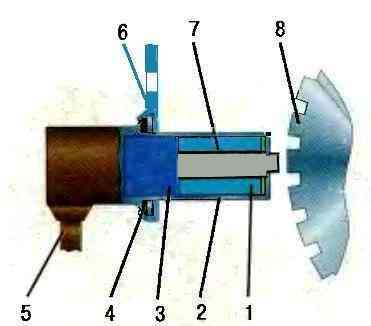
Two teeth on the disc are missing, when the depression on the disc passes by the magnet, an impulse is generated, by which the controller determines that the piston of the 1st cylinder is at TDC.
If the synchronization sensor or its circuits fail, the operation of the ignition system is not possible.
The control unit will memorize the fault code and turn on the KMSUD alarm lamp on the dashboard.
Timing Sensor Test
Turn off the ignition and disconnect the "negative" terminal of the battery.
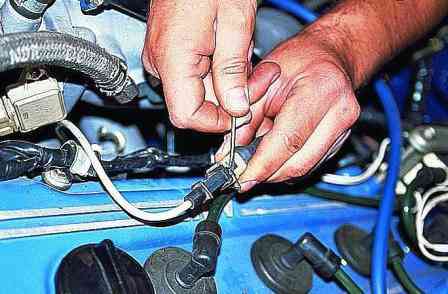
Use a thin screwdriver or an awl to remove the spring clip of the shoe.
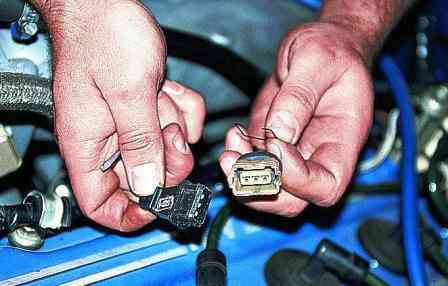
Disconnect the sync sensor connector.

Connect an ohmmeter to the central and one side output.
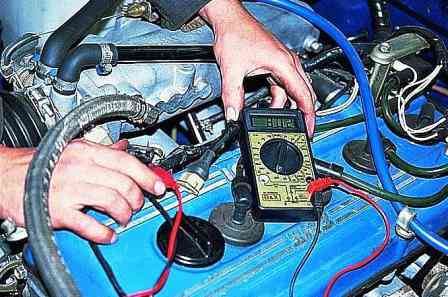
We measure the resistance of the sensor winding, which should be in the range of 700-900 Ohm.
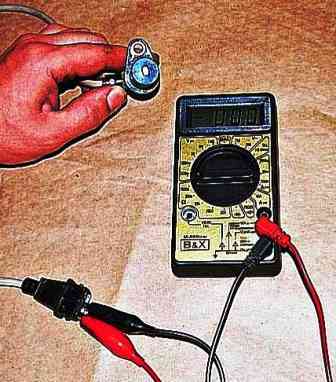
To further check the health of the sensor, remove it from the engine.
You can verify that the sensor is working by connecting a voltmeter to its terminals.
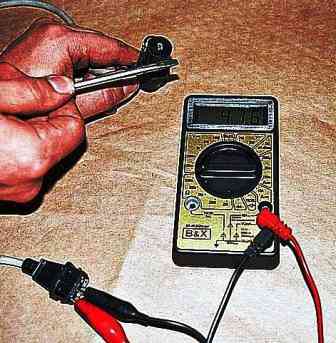
We quickly bring the metal rod to the sensor core - if it is in good condition, voltage surges are observed on the device.
We replace the defective sensor.
Removing the timing sensor

Using the “10” key, we unscrew the bolt securing the sensor to the engine block.
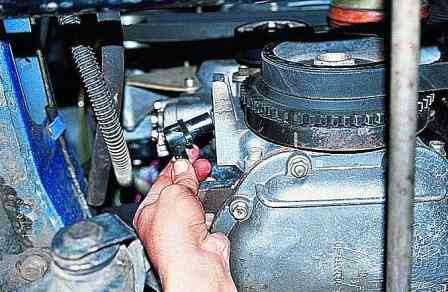
Remove the sensor from the hole.
Bending the sensor wire clamps located on the intake manifold and cylinder block, pull the wire down with the connector.
Install the sensor in reverse order.
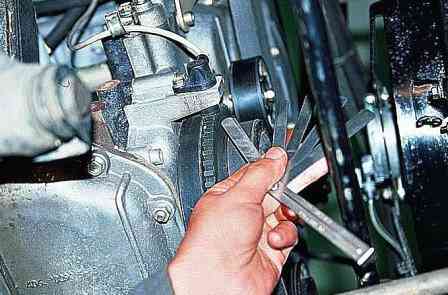
After installing the sensor, we check with a set of probes the gap between its rod and the teeth of the SI disk Sync.
The gap should be within 1-1.5 mm.







